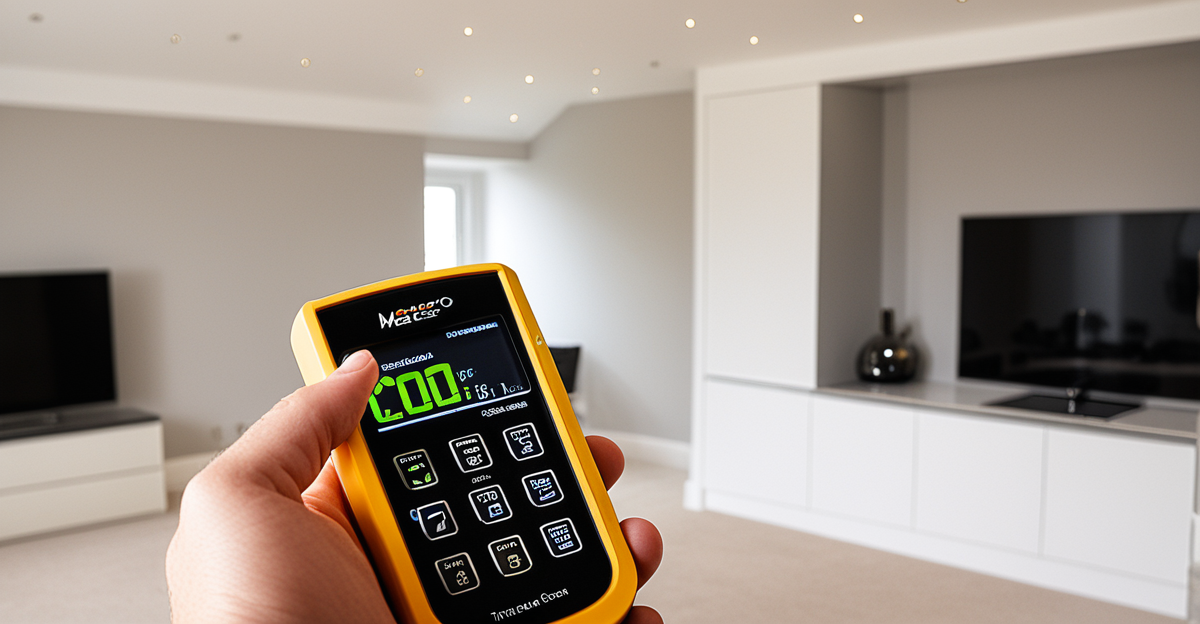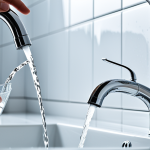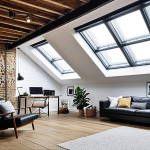Immediate Placement Priorities for CO2 Detectors in UK Terraced Homes
When planning CO2 detector placement in a UK terraced home, prioritize installing detectors where carbon monoxide risks are highest. These homes often have compact layouts, so positioning detectors correctly is vital for safety. Begin with areas containing gas appliances, such as boilers, gas fires, and gas cookers, since malfunction or leaks here present immediate threats.
The most critical rooms for initial installation include kitchens, utility rooms, and near heating systems. Placing detectors close to but not directly above these sources ensures timely detection without false alarms. Remember, CO2 rises slowly with heat, so detectors should be mounted around head height, not near the ceiling or floor.
Also read : Discover stunning skylight options for pitched roofs
Terraced homes share walls, increasing risk if a neighbour’s appliance leaks CO2. Be mindful of this, and consider installing detectors in hallways or shared spaces to monitor transfer between adjoining properties. Strategic placement based on the home’s layout and appliance locations forms the foundation of an effective CO2 detection strategy.
Following these essential safety steps helps establish robust protection early, minimizing risks associated with undetected carbon monoxide exposure in terraced homes.
Also read : Revamp your tap: best filtration solutions for hard water issues in the uk
Room-by-Room Guide to CO2 Detector Placement
Navigating safe spots for each living space
Effective room-specific CO2 detector placement sharpens protection within a terraced home’s varied areas. The kitchen, housing key gas appliances, demands a detector installed near—but not directly above—cookers or gas hobs to catch leaks swiftly while avoiding steam-triggered false alarms. Utility rooms with boilers or gas meters are next priority; here, place detectors at breathing height to ensure quick response.
In living areas, prioritize open spots that allow unobstructed air flow around detectors, avoiding corners or behind furnishings. This supports reliable CO2 sensing where occupants spend much time. For bedrooms and sleeping areas, the strategy shifts: detectors should be inside or just outside rooms to alert residents during sleep. Mount detectors approximately 1.5 meters from the floor, as CO2 mixes evenly at breathing level.
Basements and lofts require tailored placement due to air circulation differences; avoid ceiling-mounted units in basements where cold air pools. Connecting corridors in terraced homes offer useful shared detector points to monitor flow of CO2 between rooms or adjoining houses.
Thoroughly assessing each room’s layout guides a CO2 detection strategy that balances sensitivity with practical living conditions—key to UK terraced home safety.
Immediate Placement Priorities for CO2 Detectors in UK Terraced Homes
Strategically prioritising CO2 detector placement is crucial for UK terraced home safety. Begin by installing detectors adjacent to key gas appliances—boilers, gas fires, and cookers—since these areas pose the highest carbon monoxide risks. Detectors should be mounted at head height, approximately 1.5 meters above the floor, to ensure early detection without false alarms caused by steam or other vapours.
Consider the home’s compact terraced layout and shared walls, which can allow dangerous CO2 to travel between adjoining properties. Thus, placing detectors in hallways or connecting corridors enhances monitoring beyond appliance rooms, catching leaks infiltrating communal spaces. This approach reflects essential safety steps by balancing sensitivity and coverage.
Furthermore, detector positioning must avoid placing units directly above sources to reduce nuisance alarms while maintaining effective sensing. Overall, focusing on rooms with elevated CO2 risks—kitchens, utility spaces, and heating areas—combined with broader coverage in transitional zones establishes a robust CO2 detection strategy critical for protecting occupants in terraced homes.
Immediate Placement Priorities for CO2 Detectors in UK Terraced Homes
Understanding where to install CO2 detectors first is crucial for effective UK terraced home safety. Start by targeting rooms with the highest emissions risk: kitchens, utility rooms, and areas housing gas-fired heating systems. These spaces present immediate dangers due to appliance use, making CO2 detector placement here an essential safety step.
In terraced layouts, shared walls can allow carbon monoxide to seep between homes unnoticed. Installing detectors in hallways or connecting corridors captures these potential transfers early. This approach expands coverage beyond appliance rooms to communal zones, helping detect leaks that might otherwise be missed.
Effective CO2 detection strategy relies on positioning detectors at breathing height (approximately 1.5 meters) rather than near ceilings or floors. Avoid placing units directly above fuel-burning appliances to reduce false alarms triggered by heat or steam. Instead, situate them close enough to sense leaks promptly but where airflow promotes accurate readings.
Prioritising these areas balances early warning capabilities with practical installation. Following these essential safety steps enhances protection across diverse terraced home layouts, supporting occupants’ wellbeing by minimising hazardous exposure risks.
Immediate Placement Priorities for CO2 Detectors in UK Terraced Homes
Proper CO2 detector placement in UK terraced homes starts by focusing on areas with the highest carbon monoxide risk. Kitchens, where gas cookers operate, must host detectors positioned close enough to sense leaks early but not directly above to avoid false alarms from steam or heat. Utility rooms containing boilers or gas meters require detectors at breathing height to catch leaks promptly.
Shared walls in terraced layouts increase risk, as carbon monoxide can travel between homes. Therefore, placing detectors in hallways or connecting corridors provides an extra layer of protection by monitoring common spaces that may carry CO2 from neighbouring properties.
The core principles of an effective CO2 detection strategy include installing detectors at about 1.5 meters above the floor to align with typical breathing levels. This placement balances sensitivity and practicality, avoiding ceiling-mounted units where CO2 may not accumulate immediately. Additionally, detectors should never be installed where airflow is obstructed, such as behind furniture, ensuring continuous, reliable monitoring.
Following these essential safety steps helps establish comprehensive coverage, reducing undetected risks while respecting terraced home layouts and occupant habits.
Immediate Placement Priorities for CO2 Detectors in UK Terraced Homes
Careful CO2 detector placement in UK terraced homes demands prioritising areas with the highest carbon monoxide risks for maximum protection. Kitchens stand out due to gas cookers, with detectors needing installation close enough to sense leaks early yet avoiding direct placement above to minimise false alarms from steam or heat rises. Utility spaces also require detectors at breathing height, typically around 1.5 meters, where potential appliance emissions accumulate most reliably.
Understanding terraced properties’ shared walls is vital for a strong CO2 detection strategy. Installing detectors in hallways or connecting corridors extends safety coverage beyond immediate appliance rooms, monitoring possible CO2 transfer between adjoining homes. This approach addresses a significant risk unique to terraced layouts, enhancing overall UK terraced home safety.
Effective placement follows several essential safety steps:
- Mount detectors at breathing zone height to align with typical CO2 gas distribution
- Avoid obstructed airflow locations, such as behind furniture or near vents
- Steer clear of ceiling or floor positioning, where CO2 concentration may be misleading
Adhering to these principles optimises early leak detection and occupant safety, forming the foundation of a robust CO2 detector placement plan in terraced homes.
Immediate Placement Priorities for CO2 Detectors in UK Terraced Homes
Effective CO2 detector placement starts by identifying key zones with the highest carbon monoxide risk. In UK terraced homes, this means prioritising kitchens, utility rooms, and spaces containing gas-fired heating systems. These areas are most prone to leaks due to appliance operation, so detectors should be installed nearby but never directly above fuel-burning devices to prevent false alarms triggered by steam or heat.
The compact layout typical of terraced properties means shared walls can allow CO2 to drift between adjacent homes, compounding hazards. To address this, placing detectors in hallways or corridors is an essential safety step. This expands monitoring beyond individual rooms to communal spaces vulnerable to cross-contamination, significantly enhancing overall UK terraced home safety.
Mount detectors approximately 1.5 meters above floor level to align with human breathing height where carbon monoxide gas tends to accumulate. Avoid ceiling or floor placements, since CO2 disperses unevenly, which can delay detection. Additionally, ensure detectors are not obstructed by furniture or vents, so air can circulate freely around sensors, improving accuracy.
This multi-layered placement strategy balances prompt leak detection with practical installation considerations—a foundation for a robust and reliable CO2 detection strategy in terraced homes.
Immediate Placement Priorities for CO2 Detectors in UK Terraced Homes
Choosing the right spots for CO2 detector placement in terraced homes requires a strategic focus on zones with increased carbon monoxide risks. Start by installing detectors near gas appliances: cookers, boilers, and gas fires. This ensures prompt detection where leaks are most likely. Detectors must be mounted approximately 1.5 meters above floor level, aligning with typical breathing height, rather than at ceilings or floors where CO2 concentration can be uneven.
Key to effective UK terraced home safety is recognising how shared walls facilitate CO2 migration between neighbouring properties. To cover this unique risk, place detectors in hallways or connecting corridors. This additional coverage monitors communal spaces vulnerable to cross-contamination beyond individual rooms.
Following these essential safety steps also involves avoiding obstructed airflow areas—behind furniture or near vents—where sensors could be dulled. Detectors should never be installed directly above fuel-burning appliances; false alarms due to steam or heat are common there. By prioritising these critical zones and adhering to proven placement principles, homeowners ensure early warning and maximise occupant protection in terraced residences.







